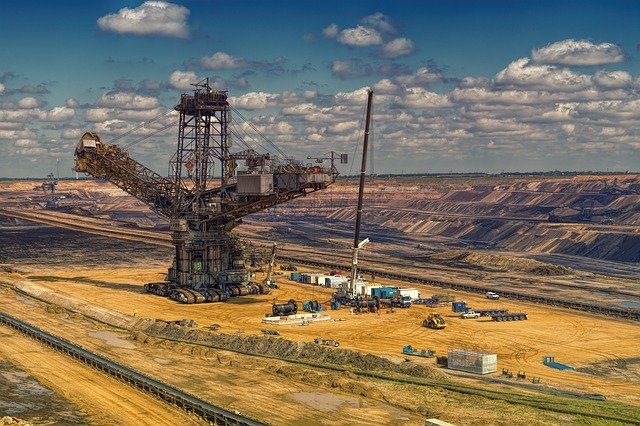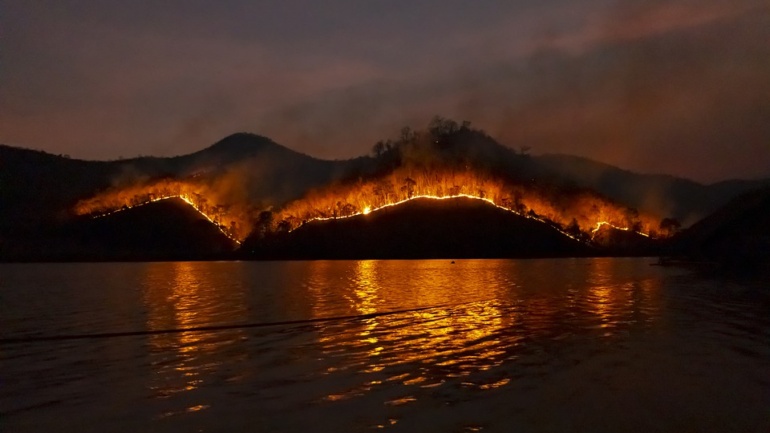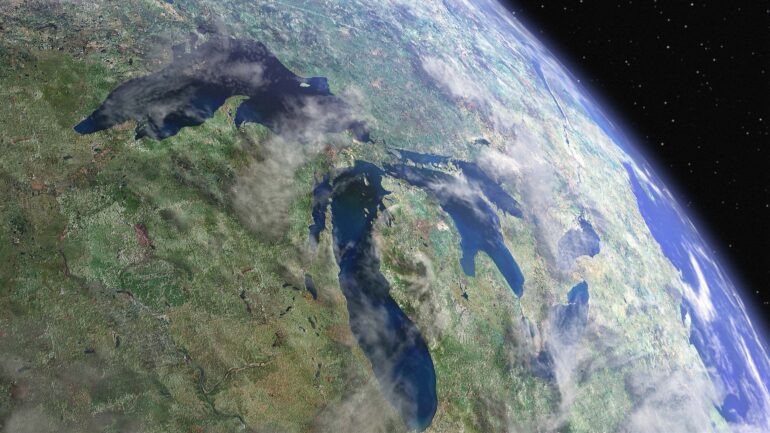By April Day, Director, Publishing for Save The Water™ | April 16, 2018
Introduction
Florida has been prospering from phosphate mining for over 100 years.1 In Florida, the industry brings in $85 million annually. Florida produces three-fourths of the phosphate used in the United States. Phosphate is used for fertilizer and animal food ingredients.2 Mining requires permission, which comes through permits.1 Federal, Florida, and local authorities issue mining permits.3,4 Those permitting processes allow public participation.5
Central Florida includes Bone Valley, famous for its dinosaur fossils and phosphate mining. One of the top phosphate mining companies, Mosaic, calls it home. Central Florida has risked water contamination from Mosaic’s mining site accidents.2 Ask the people of Polk County.3 Now, north Florida faces the prospect of more phosphate mining. But many residents of Union and Bradford Counties oppose the phosphate mining. Union County provided a public forum to decide whether to issue the permit.1 But Bradford County did not and has no plans to schedule any.1 Union County got slapped with a lawsuit.6
Problem: Phosphate Mining and Risks to Public Water
Florida uses wet process manufacture of phosphoric acid. This process requires a lot of water.7 In Florida, the South Florida Water Management District “granted Mosaic a permit to pump up to 70 million gallons of water a day.”2 This was in an area with restrictions on water since 1992.2 This water used in the chemical process is often called “process water.” Among other things, process water sits on top of phosphogypsum stacks.7
Each ton of usable phosphate produces five tons of phosphogypsum.3 In Florida, mining turns out about 30 million tons of phosphogypsum each year. These stacks of phosphogypsum are called “gyp stacks.”7 Ponds of process water sit on top of these gyp stacks.2 When the ground is stable and the pond level is stable, there is no problem. But heavy rains bring big problems. Phosphogypsum contains uranium and radium. When radium decays it forms radon, a cancer causing, radioactive gas.3
The radioactivity of these gyp stacks exceeds the level that the U.S. Environmental Protection Agency (EPA) states is safe for humans.2 Nonetheless, the mining industry has asked to use the phosphogypsum for walls and other products. But since 1992, EPA has said no. So the industry just keeps stacking it.2 Thus, the phosphate mining industry has left accidents in its wake.
For example, one mining plant had the same “accident” just 12 years apart. This mining plant is the New Wales Plant in Mulberry, Polk County.2
The “Accident” that Happened Twice
Mosaic owns the New Wales Plant in Mulberry, Polk County.2 On August 27, 2016, a 14-meter sinkhole formed in a gyp stack at the plant. This hole allowed contaminated liquid to reach underground. Then the liquid reached the Floridan aquifer, a major drinking water source.8
Before that, in 1994, the same facility witnessed one “of the biggest Florida sinkholes ever recorded.”2 But in 2016, Mosaic and the Florida Department of Environmental Protection both called it an anomaly or a water loss event, not a sinkhole.2 Also, they did not tell the public about the accident for ten days. The law does not require them to tell the public unless the spill goes outside their property.2 Mosaic says that almost 1,400 tests of area wells show that the spill remained on the company’s property.3 Thus, they claim that there are no off-site impacts.
Differing Scientific Opinion about How Water Moves
But Georgia hydroecologist Sydney Bacchus and retired U.S. Geological Survey hydrologist Don Rice disagree. Bacchus has been testifying against the phosphate mining industry since the 1970’s. According to her, the chance of the spill remaining on Mosaic property is “virtually zero.”3 The location of a sampling site is important to determine the level of contamination. For example, the Floridan aquifer is full of fractures. According to Bacchus, if the sampling sites are not near these fractures, “the information they’re getting from monitoring wells is basically useless to determine the flow or migration of contaminants to offsite locations.”3
Groundwater moves slowly to the west in the Floridan aquifer. But this water can move 500 to 1,000 ft per day, meaning that contaminated wastewater can move off a mining site within three to five days.3 Later, Mosaic said that 215 million gallons of process water spilled into the aquifer and 45,000 tons of solid phosphogypsum also disappeared down the sinkhole.3
Public in Union and Bradford Counties Face Mining Permitting
Now, two northern Florida counties, Union and Bradford, face whether to permit mining. Four families formed a venture, HPS Enterprises, asking for permission to use about 7,400 acres of the families’ lands in Union and Bradford Counties for phosphate mining.1 HPS submitted its permit application on July 28, 2017.9
Union County shelved the decision whether to permit the phosphate mining through February 2019. Moratorium on mining in Union County is in year three.1 Because it wanted public involvement, the county scheduled public meetings for a year.10 Then, in February 2018, HPS slapped it with a lawsuit. On the other hand, Bradford is processing the permit without public input.1
Solutions Need a New Regime
Now, the two counties’ residents are waiting to see how this conflict will play out. Central Florida could serve as an example for the north Florida counties.
Public participation in reporting. As many jurisdictions do, Florida allows public participation in the permitting process. Although not a common practice, perhaps the public could also participate in reporting compliance after mining starts.5
Change the regulations for the liners of gyp stacks. Mosaic’s gyp stacks and high-density liners complied with state regulations. But nobody can agree on whether the sinkhole of August 2016 happened despite those liners.3 Did the radioactive process water burn through the liner? Maybe current standards need to be reassessed.
Independent monitoring by nonprofits or other organizations. Mosaic conducted the testing. Perhaps after a spill or other accident that could contaminate water, nonprofits or other organizations need to monitor the spill independently.
Action
Save the WaterTM is working to provide water sampling, testing, and treatment to ensure clean, contamination-free water for all. Get involved and support Save the WaterTM’s mission.
References:
- Cleveland Tinker. January 20, 2018. “Moratorium extended on Union County phosphate plan.” The Gainesville Sun. https://bit.ly/2Iu8vhx
- Craig Pittman. April 26, 2017. “Time Bombs: The Clock is Ticking on Florida’s Mountain of Hazardous Phosphate Waste.” Sarasota. https://www.sarasotamagazine.com/articles/2017/4/26/florida-phosphate
- Tony Pugh. January 21, 2017. “I don’t know and I’m scared to death.” McClatchy. http://www.mcclatchydc.com/news/nation-world/national/article127453944.html
- Florida Department of Environmental Protection. “Phosphate.” https://floridadep.gov/water/mining-mitigation/content/phosphate
- Sophia Thomashausen et al. A Comparative Overview of Legal Frameworks Governing Water Use and Waste Water Discharge in the Mining Sector. Resources Policy 55, 143-151 (2018). https://www.sciencedirect.com/science/article/pii/S0301420717302933
- Cleveland Tinker. February 4, 2018. “Company files suit against Union County in mining battle.” The Gainesville Sun. https://bit.ly/2GDWEAU
- Florida Industrial and Phosphate Research Institute. “Process Water.” http://www.fipr.state.fl.us/about-us/phosphate-primer/process-water/
- WISE Uranium Project. “Chronology of major tailings dam failures.” World Information Service of Energy Uranium Project. http://www.wise-uranium.org/mdaf.html
- D. Kent Safriet and Timothy Riley. August 30, 2017. Re: HPS Enterprises II, LLC’s Claim for Relief under the Land Use and Environmental Dispute Resolution Act, Section 70.51, Fla. Stat. Hopping Green & Sams. https://bit.ly/2JOqYa1
- WWALS Watershed Coalition. “A year of opportunities to stop phosphate mining in Union County, FL.” WWALS Watershed Coalition (Suwanee RIVERKEEPER). https://bit.ly/2q9Rm69





